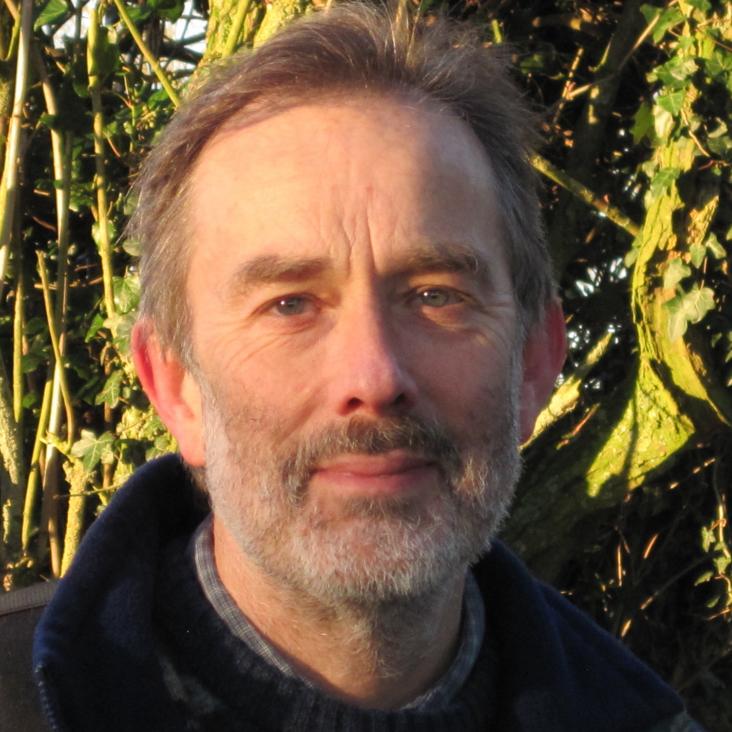Local pairing of Feynman histories in many-body Floquet models
Physical Review X American Physical Society 11:2 (2021) 021051
Abstract:
We study many-body quantum dynamics using Floquet quantum circuits in one space dimension as simple examples of systems with local interactions that support ergodic phases. Physical properties can be expressed in terms of multiple sums over Feynman histories, which for these models are paths or many-body orbits in Fock space. A natural simplification of such sums is the diagonal approximation, where the only terms that are retained are ones in which each path is paired with a partner that carries the complex conjugate weight. We identify the regime in which the diagonal approximation holds and the nature of the leading corrections to it. We focus on the behavior of the spectral form factor (SFF) and of matrix elements of local operators, averaged over an ensemble of random circuits, making comparisons with the predictions of random matrix theory (RMT) and the eigenstate thermalization hypothesis (ETH). We show that properties are dominated at long times by contributions to orbit sums in which each orbit is paired locally with a conjugate, as in the diagonal approximation, but that in large systems these contributions consist of many spatial domains, with distinct local pairings in neighboring domains. The existence of these domains is reflected in deviations of the SFF from RMT predictions, and of matrix element correlations from ETH predictions; deviations of both kinds diverge with system size. We demonstrate that our physical picture of orbit-pairing domains has a precise correspondence in the spectral properties of a transfer matrix that acts in the space direction to generate the ensemble-averaged SFF. In addition, we find that domains of a second type control non-Gaussian fluctuations of the SFF. These domains are separated by walls that are related to the entanglement membrane, known to characterize the scrambling of quantum information.Spectral Lyapunov exponents in chaotic and localized many-body quantum systems
Physical Review Research American Physical Society 3:2 (2021) 023118
Abstract:
We consider the spectral statistics of the Floquet operator for disordered, periodically driven spin chains in their quantum chaotic and many-body localized (MBL) phases. The spectral statistics are characterized by the traces of powers t of the Floquet operator, and our approach hinges on the fact that for integer t in systems with local interactions, these traces can be re-expressed in terms of products of dual transfer matrices, each representing a spatial slice of the system. We focus on properties of the dual transfer matrix products as represented by a spectrum of Lyapunov exponents, which we call spectral Lyapunov exponents. In particular, we examine the features of this spectrum that distinguish chaotic and MBL phases. The transfer matrices can be block diagonalized using time-translation symmetry, and so the spectral Lyapunov exponents are classified according to a momentum in the time direction. For large t we argue that the leading Lyapunov exponents in each momentum sector tend to zero in the chaotic phase, while they remain finite in the MBL phase. These conclusions are based on results from three complementary types of calculation. We find exact results for the chaotic phase by considering a Floquet random quantum circuit with on-site Hilbert space dimension q in the large-q limit. In the MBL phase, we show that the spectral Lyapunov exponents remain finite by systematically analyzing models of noninteracting systems, weakly coupled systems, and local integrals of motion. Numerically, we compute the Lyapunov exponents for a Floquet random quantum circuit and for the kicked Ising model in the two phases. As an additional result, we calculate exactly the higher-point spectral form factors (hpSFFs) in the large-q limit and show that the generalized Thouless time scales logarithmically in system size for all hpSFFs in the large-q chaotic phase.Measurement-induced steering of quantum systems
Phys. Rev. Research 2 (2020) 033347-033347
Abstract:
We set out a general protocol for steering the state of a quantum system from an arbitrary initial state towards a chosen target state by coupling it to auxiliary quantum degrees of freedom. The protocol requires multiple repetitions of an elementary step: during each step the system evolves for a fixed time while coupled to auxiliary degrees of freedom (which we term 'detector qubits') that have been prepared in a specified initial state. The detectors are discarded at the end of the step, or equivalently, their state is determined by a projective measurement with an unbiased average over all outcomes. The steering harnesses back-action of the detector qubits on the system, arising from entanglement generated during the coupled evolution. We establish principles for the design of the system-detector coupling that ensure steering of a desired form. We illustrate our general ideas using both few-body examples (including a pair of spins-1/2 steered to the singlet state) and a many-body example (a spin-1 chain steered to the Affleck-Kennedy-Lieb-Tasaki state). We study the continuous time limit in our approach and discuss similarities to (and differences from) drive-and-dissipation protocols for quantum state engineering. Our protocols are amenable to implementations using present-day technology. Obvious extensions of our analysis include engineering of other many-body phases in one and higher spatial dimensions, adiabatic manipulations of the target states, and the incorporation of active error correction steps.Quantum Hall network models as Floquet topological insulators
Phys. Rev. Lett. 125 (2020) 086601-086601


